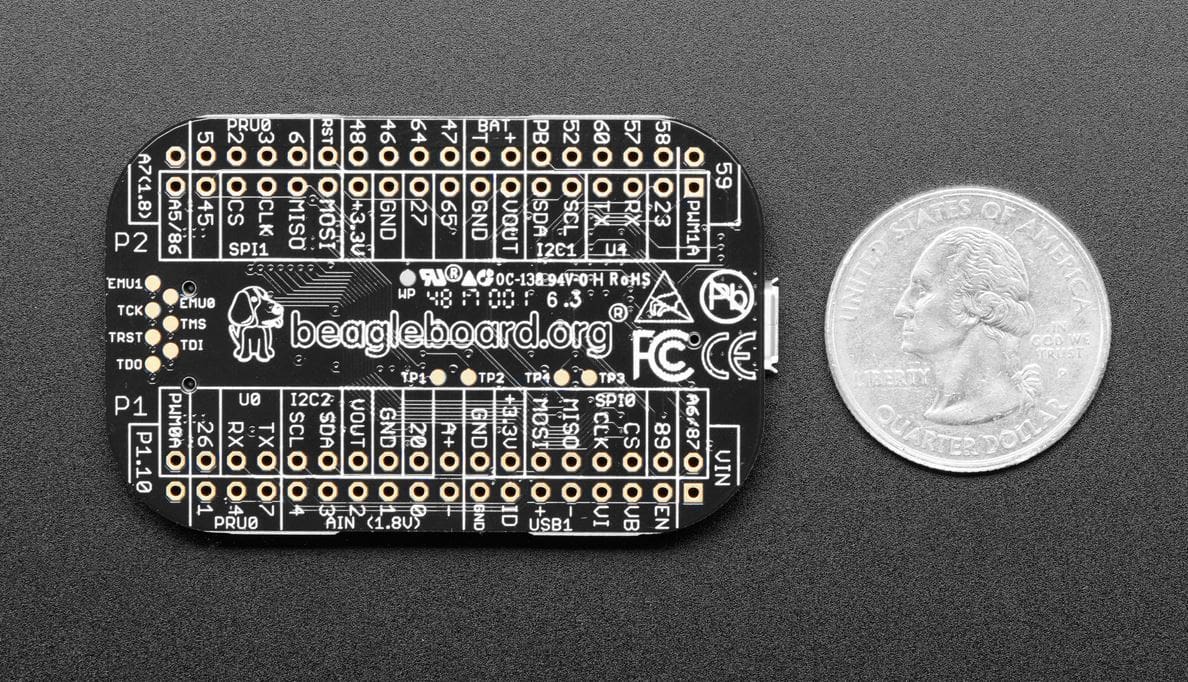Pocket-Sized Computing
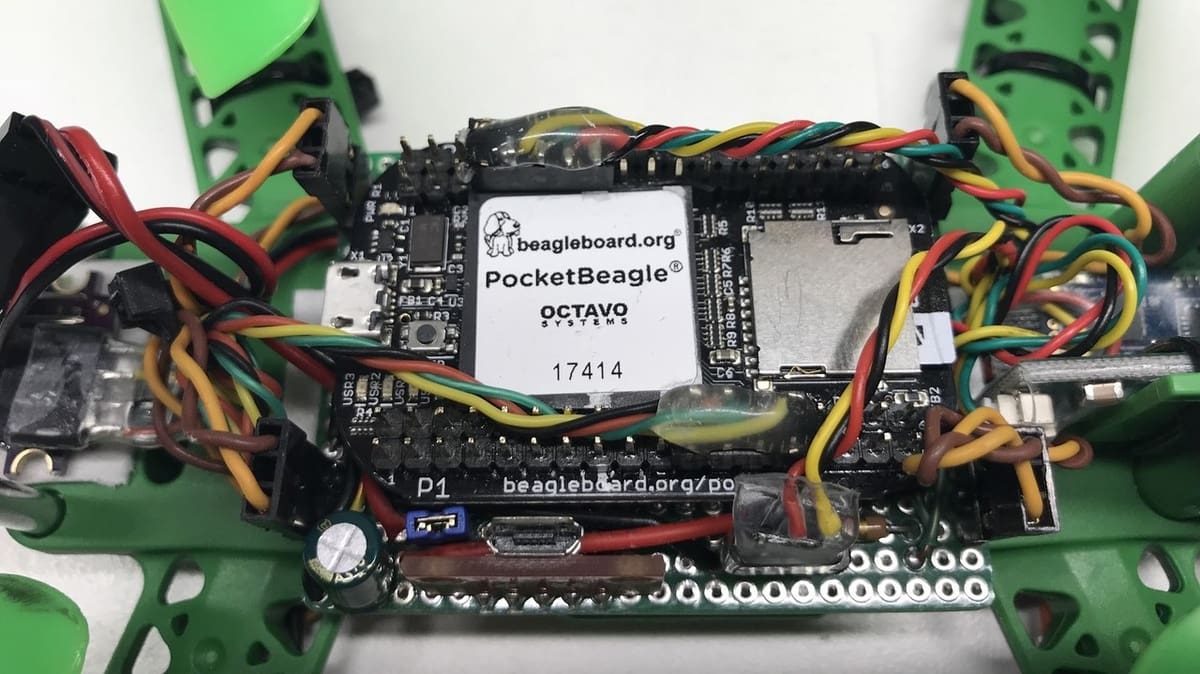
The PocketBeagle board is yet another single-board computer (SBC), except this time, it’s not a fruit! Single-board computers are just that: miniature computers on a single circuit board.
The PocketBeagle is an even smaller version of the BeagleBoard and was released in 2017, nine years after the original. The manufacturer, BeagleBoards, has also made other SBCs since the first BeagleBoard, such as the BeagleBone, BeagleBone AI, capes (extras), and different variations.
BeagleBoards made the PocketBeagle ultra-tiny; in fact, this SBC is the width of a cherry and the length of a stick of gum. The PocketBeagle has an impressive range of onboard features that we’ll discuss in the following sections and can be used in 3D printing for motor drivers, processing a display, and other mini 3D printer upgrades And, it’s relatively cheap, costing around $35.
In this article, we’ll be discussing the PocketBeagle board. We’ll go over its features, and compare it to the competition (similar SBCs). We’ll also list the specifications for this SBC and provide you with a few links to where you can buy it.
Features
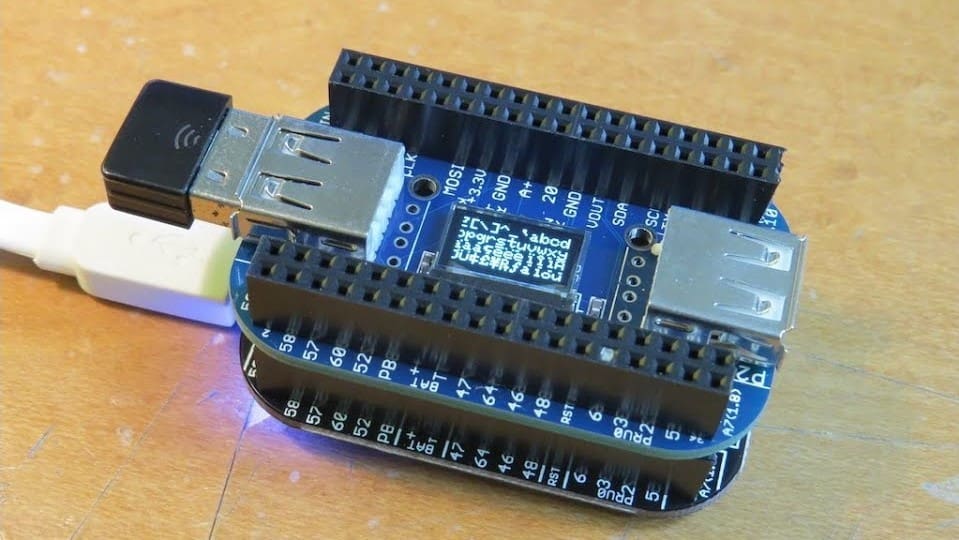
In spite of the limited space, the PocketBeagle has numerous features. Of course, it doesn’t have as many larger ports (USB, card slots, etc.) as other SBCs do, but this is the trade-off for its minimalistic design. The PocketBeagle also has notable software and some attractive chips that we’ll discuss below.
Ports
As we said earlier, the PocketBeagle has limited ports due to the limited space, but it does have a few. First up is the Micro-USB Type-B port, which can be used to power the SBC. Next, the board has a Micro-SD card slot that you can use to flash elements on the board and extend the storage.
The board also has 72 expansion pin headers, to which you can add capes or add-ons, or you can solder directly onto the metal solder pads. There are also 8 analog input and 44 digital I/O ports; however, there are no audio or video ports.
Chips & Other Hardware
The PocketBeagle is equipped with an integrated chip that combines the processor and the RAM all in one. On this note, the board has an Octavo Systems 1-GHz ARM Cortex-A8 processor, which is on the same chip as the SBC’s 512 MB of DDR3 memory (RAM).
The board has two 32-bit 200-MHz programmable real-time units, along with power and battery management, a 3D accelerator, and 4 KB of EEPROM storage. (This is integrated on the board that can’t be removed.)
Software
The PocketBeagle board comes with OSD3358-SM, which is a system compatible with the processor unit. You can find out how to flash the Debian operating system on your board on BeagleBoard’s website. On the website, BeagleBoards also mentions Linux software, so that’s also a possibility.
The Bottom Line
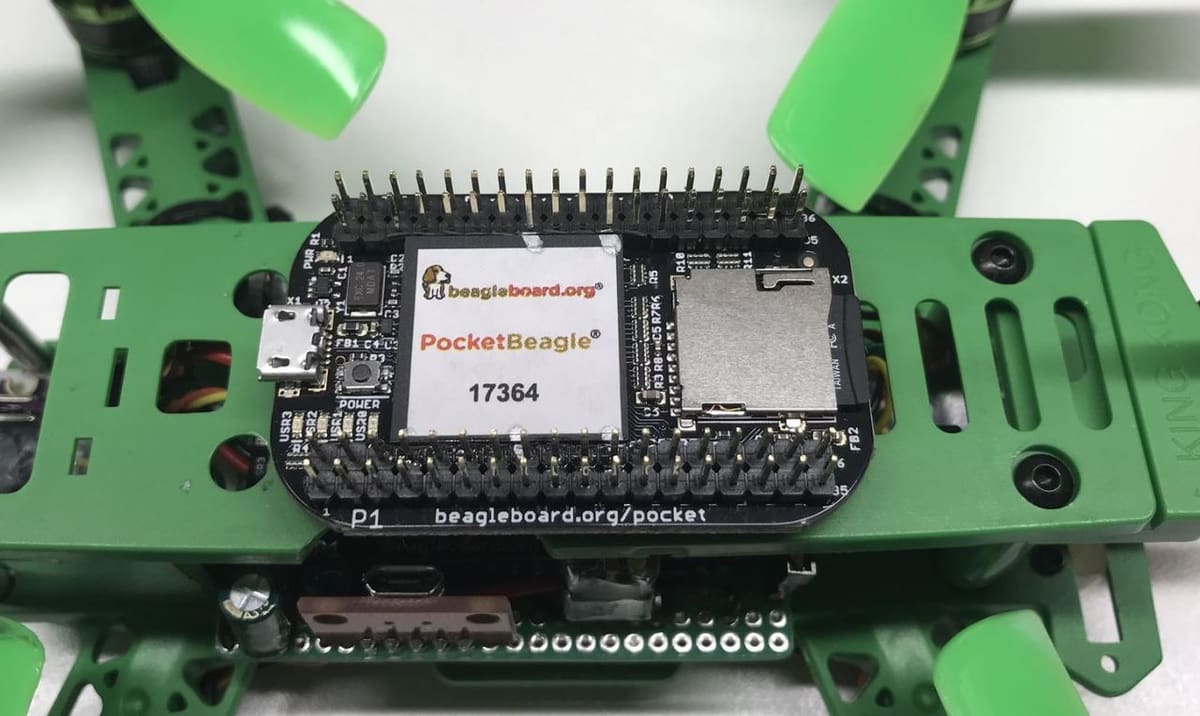
Overall, the PocketBeagle has impressive features considering its size. That said, it does have some competition. Compared to similar boards, like the Raspberry Pi Zero, the PocketBeagle doesn’t really stand out from the crowd.
The PocketBeagle and the Raspberry Pi Zero both have 512 MB of RAM, a single-core processor, and a Micro-USB port for power. However, the Raspberry Pi Zero has an additional Micro-USB port. Indeed, this is an area in which the PocketBeagle is somewhat lacking, as the Raspberry Pi Zero also has a Mini HDMI port and a CSI camera ribbon cable slot.
At the same time, the PocketBeagle has more solder pads and other inputs (analog and digital). The fact that the PocketBeagle doesn’t have video or audio sources is a disadvantage, but the available add-ons and capes for this board make up for it.
Sadly, the PocketBoard also doesn’t have an onboard network system like the Raspberry Pi Zero does. The combined processor and RAM chip is a great benefit, though, allowing BeagleBoards to add more pads and ports. The PocketBeagle is also smaller than the Raspberry Pi Zero by just 10 mm in width, so that’s another bonus if size is a priority.
The price for the PocketBoard is fairly reasonable, too, but in the end, deciding which SBC you need depends on what you need it for. If you want an all-in-one board with more USB ports and such, the PocketBeagle isn’t the one to choose, but if you want an open-source flight controller, you’ve got your guy.
Specifications
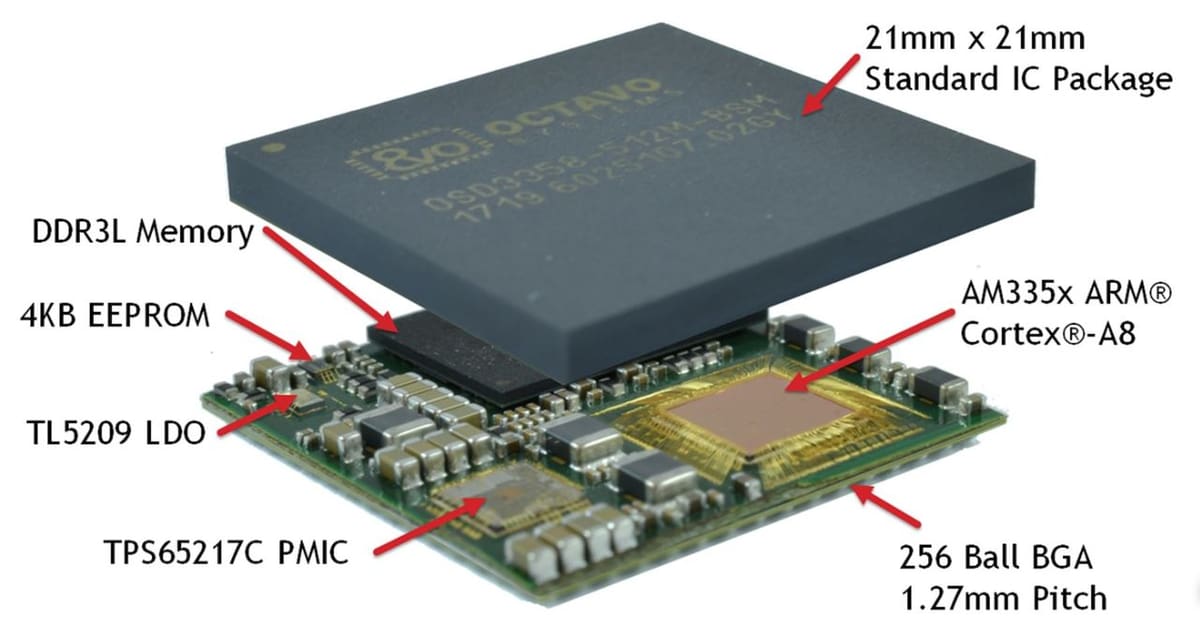
While not as powerful as other SBCs on the market, the PocketBeagle still packs a decent punch for its size. And, as mentioned previously, there’s always the possibility of upgrading with capes.
- CPU: Octavo Systems 1 GHz ARM Cortex-A8
- RAM: 512 MB DDR3
- Ports: Micro-USB type B, Micro-SD card slot, 72 expansion pin headers, 8 analog inputs, 44 digital I/Os
- EEPROM: 4 KB
- Serial interfaces: 3D accelerator
- Operating system: OSD3358-SM, Debian, Linux
- Power: 150 mA; 5V; Micro USB
- Dimensions and weight: 55 x 35 x 5 mm; 10.7 g
Where to Buy
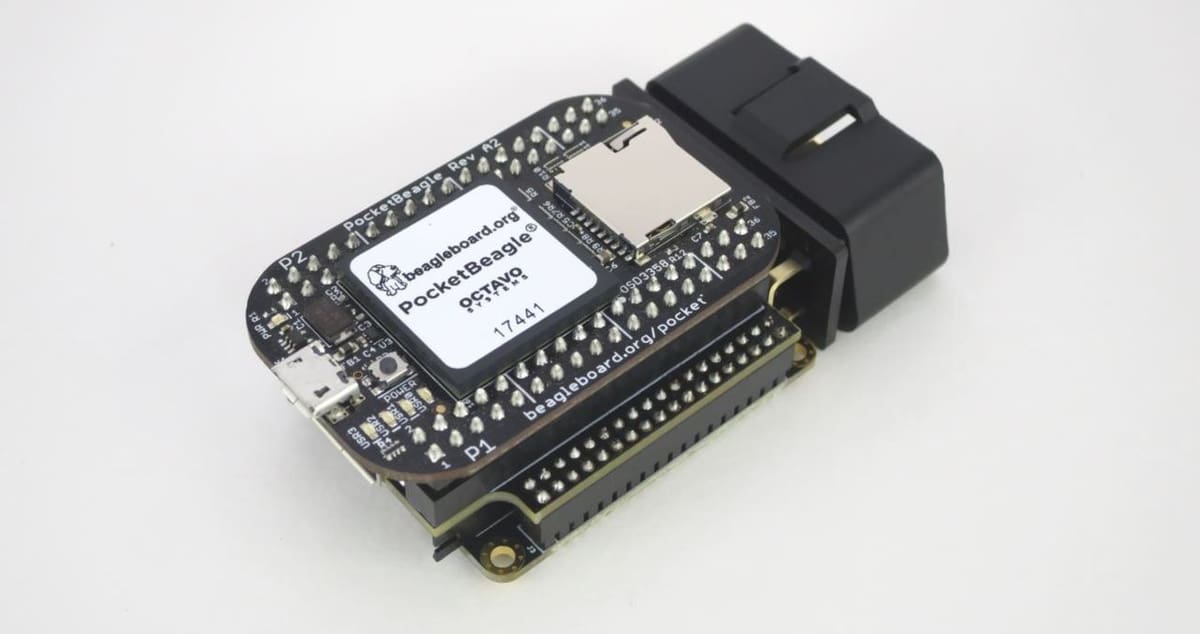
Want to invest in this minuscule SBC? You can buy the PocketBeagle board from the following retailers:
Lead image source: Alasdair Allan via Hackster.io
License: The text of "PocketBeagle Board: Review the Specs" by All3DP is licensed under a Creative Commons Attribution 4.0 International License.
CERTAIN CONTENT THAT APPEARS ON THIS SITE COMES FROM AMAZON. THIS CONTENT IS PROVIDED ‘AS IS’ AND IS SUBJECT TO CHANGE OR REMOVAL AT ANY TIME.

